12 Rare Advertising Tins Worth Adding to Your Collection
Old advertising tins have a way of bringing the past right into your hands. The colors may have faded and the edges may be worn, but their stories remain full of character. Many collectors see them as more than container. They are reminders of how everyday products once looked and felt. Their mix of function and design makes them stand out in any collection.
This post may contain affiliate links, which helps keep this content free. Please read our disclosure for more info.
Coca-Cola Diamond Label Tin
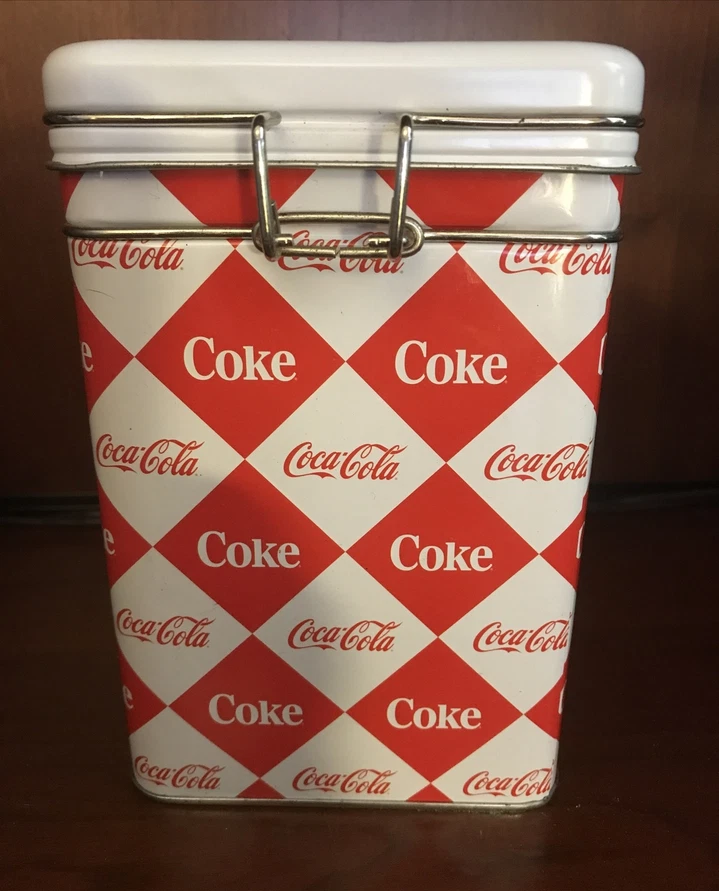
Coca-Cola produced some of the most recognizable advertising tins, and the Diamond Label Tin remains one of its most collectible. Released during the 1910s, it features the famous diamond-shaped logo framed with bright red and gold accents. The design was used on promotional tins for candies and small goods sold at soda fountains. Collectors value this piece for its connection to the early years of the brand’s marketing. Its current market value typically ranges between $350 and $500 depending on condition.
The charm of this tin lies in its historical relevance and vibrant presentation. Many examples were given away during early Coca-Cola promotional campaigns, making surviving tins harder to find today. Some have embossed details that add texture and depth to the design. The few in mint condition can command higher prices at vintage auctions. It stands as a striking symbol of early twentieth-century American advertising.
Lifebuoy Soap Tin
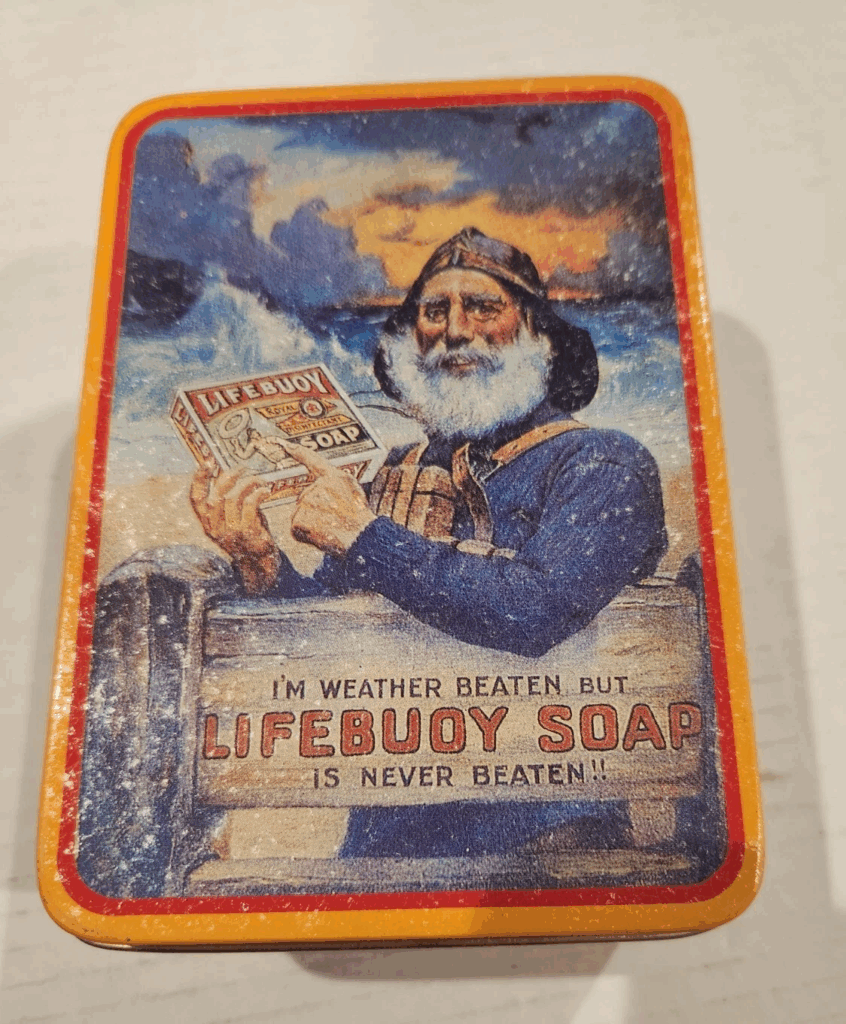
Produced by Lever Brothers in the early 1900s, the Lifebuoy Soap Tin showcased clean, bold graphics that reflected the company’s focus on hygiene. These tins were once used to hold bars of the popular soap, featuring the distinctive red-and-white Lifebuoy emblem. They were distributed in general stores across the United States and Europe. Their age and association with one of the earliest mass-marketed hygiene brands make them highly collectible. The average market value falls between $120 and $200.
What makes this tin appealing is its nostalgic look paired with its cultural significance. It represents a time when personal hygiene products began to shape consumer habits. Some collectors prize versions that still contain remnants of the original soap packaging. Brightly colored labels that have survived in good condition are especially valued. Owning one connects collectors to an era of early brand advertising innovation.
Oxo Cubes Tin
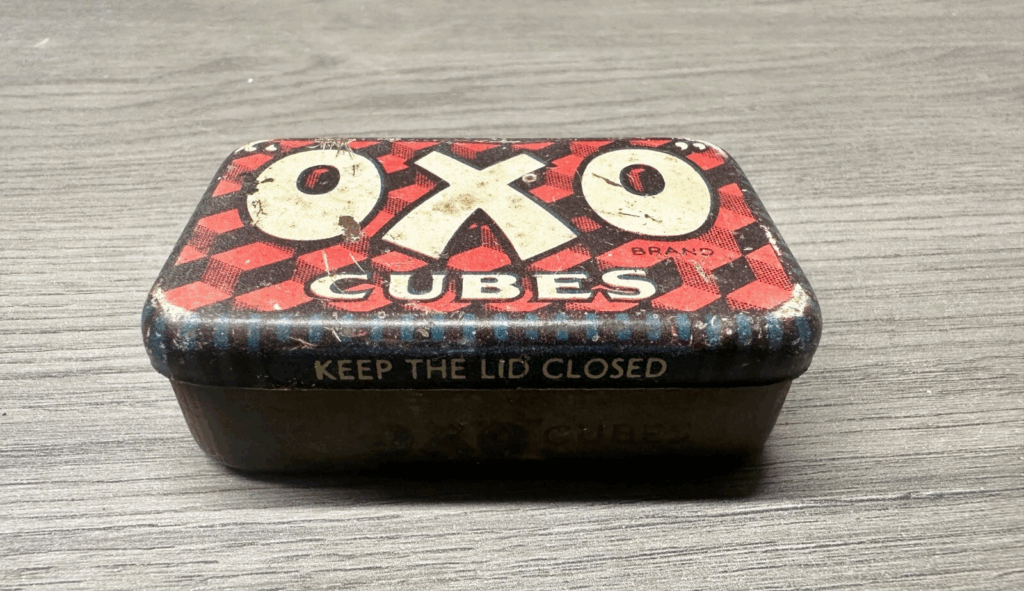
The Oxo Cubes Tin was first produced in England in the early 1900s as part of the brand’s campaign to popularize beef stock cubes. The tins featured cheerful red designs with simple block lettering, making them instantly recognizable. They were used to store small cubes that became kitchen staples during wartime and beyond. Early editions of these tins are now sought after for their connection to domestic history. Typical prices range from $80 to $150.
Collectors admire Oxo tins because they blend practicality with charm. Their compact size and rustic finish make them easy to display. Some variants feature war-era messages encouraging household thrift, which adds historical depth. Well-preserved lids and bright colors tend to raise their value. These pieces remain favorites among those who enjoy collecting British advertising memorabilia.
Cadbury’s Cocoa Tin
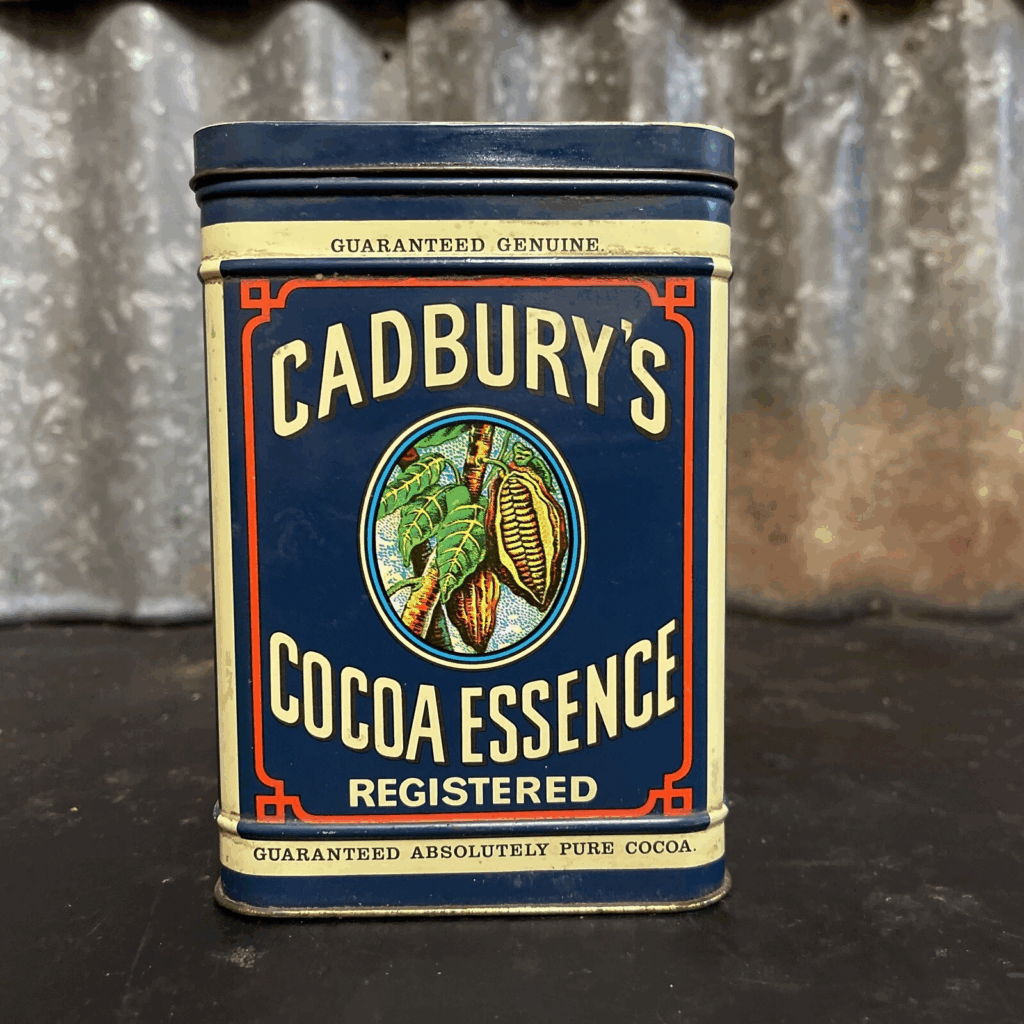
Cadbury released beautifully designed cocoa tins throughout the late nineteenth and early twentieth centuries. The company’s advertising focused on quality and purity, often expressed through elegant script and royal blue tones. These tins were used both for home kitchens and shop displays. Early designs with embossed lettering and detailed illustrations of cocoa beans are particularly valuable. Market values generally fall between $150 and $250.
Collectors appreciate Cadbury tins for their sophisticated style and branding consistency. Many display early uses of the company’s purple color scheme, now closely tied to the brand identity. Some examples even feature portraits of the Cadbury factory, adding historical interest. Condition and rarity play major roles in determining price. Owning one brings a touch of Victorian charm to any collection.
Player’s Navy Cut Tobacco Tin
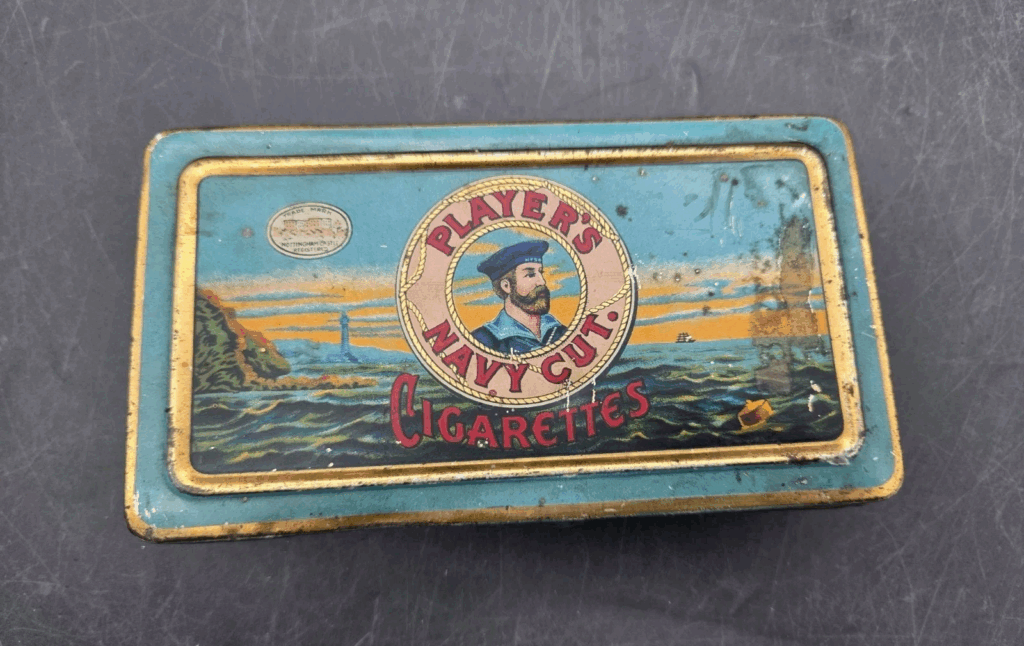
Produced by John Player and Sons in the United Kingdom, the Player’s Navy Cut Tobacco Tin features the iconic sailor logo that became famous worldwide. These tins were distributed widely from the early 1900s through the mid-century period. Their detailed artwork and maritime themes made them standout advertising items. The tobacco tins are particularly prized when the colors remain vivid and the lid seals are intact. They typically sell for around $90 to $180.
Collectors favor these tins for their cultural and visual appeal. They represent an era when packaging was as much a form of art as it was practical. Many enthusiasts search for limited-run variants featuring different sailor portraits. Some tins even bear tax stamps or factory markings that add authenticity. The design continues to be admired for its classic nautical charm.
Colman’s Mustard Tin
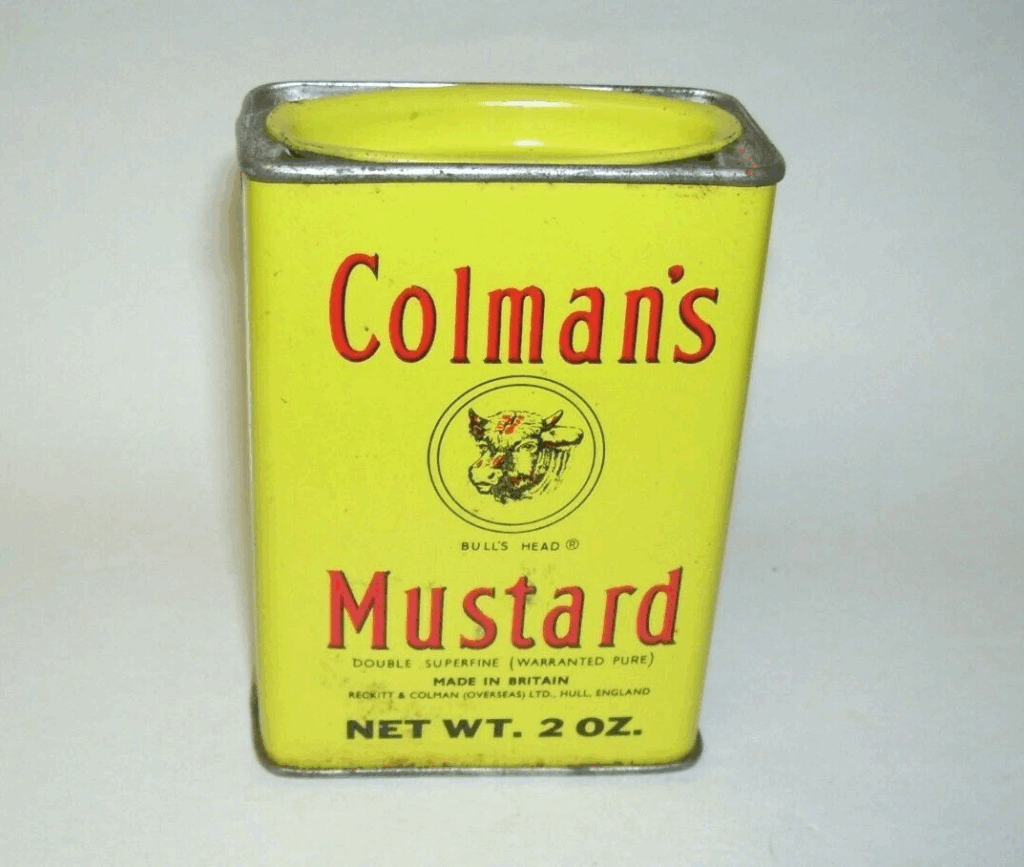
Colman’s of Norwich, England, began producing mustard tins in the 1890s, showcasing their famous yellow branding. These tins featured bold typography and the signature bull’s head logo that became a household image. The earliest versions were filled with powdered mustard sold in small portions. Their bright color and clear branding helped them stand out on store shelves. Today, they are valued between $70 and $130 depending on condition.
Collectors treasure Colman’s tins because they mark the shift toward recognizable brand identity in food packaging. Some rare versions include commemorative prints or special trade designs. Over time, the paint often fades, giving the tins a rustic charm. Many collectors clean them gently to preserve their original appeal. Their longevity in advertising history makes them a timeless collectible.
Sunlight Soap Tin
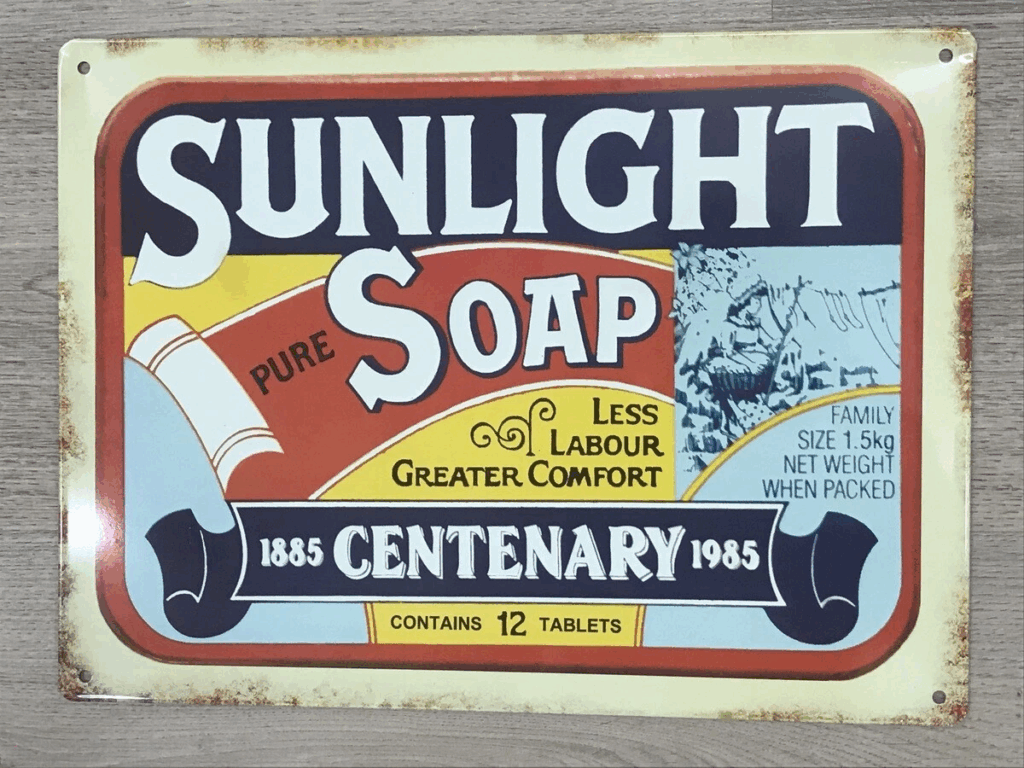
Sunlight Soap, another creation of Lever Brothers, was among the first brands to advertise household products with decorative tins. Introduced in the late 1800s, these tins featured floral or pastoral imagery promoting the idea of freshness and cleanliness. They were often given away as promotional items in stores. The detailed illustrations and gold trim make early editions highly collectible. Market prices generally range between $100 and $190.
The appeal of Sunlight Soap tins lies in their combination of artistry and function. Many of them were reused in homes for storing sewing supplies or keepsakes, which makes surviving pieces rare. Variants with embossed designs are especially sought after. Collectors enjoy their connection to one of the first globally advertised household brands. These tins bring both charm and history to any vintage collection.
Singer Sewing Machine Oil Tin
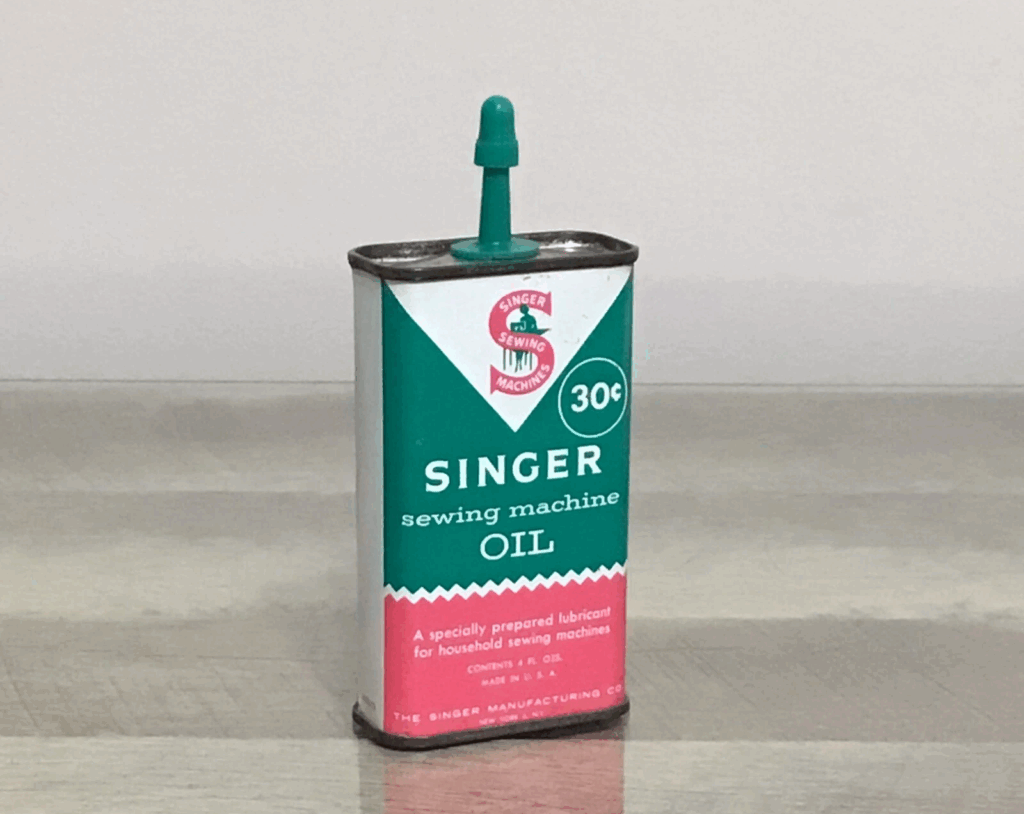
The Singer Manufacturing Company released small tins of sewing machine oil as part of its branding and service kits in the early 1900s. The tins carried the familiar red S logo on green or gold backgrounds. They were functional yet beautifully designed, helping reinforce the company’s global identity. Surviving tins often show signs of wear from real use, adding to their authenticity. Prices typically range from $60 to $120.
Collectors appreciate the Singer tins for their industrial yet elegant look. They represent a time when even utilitarian items were designed with care. Smaller travel-size versions are especially hard to find. Many collectors pair these tins with vintage Singer machines for a complete display. Their historical connection to early home industry gives them lasting appeal.
Blue Bird Toffee Tin
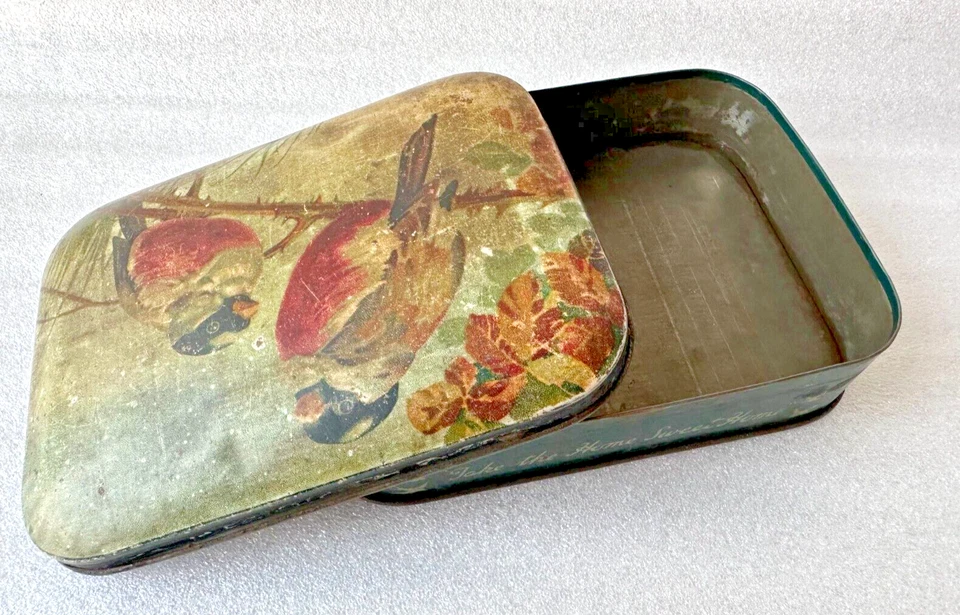
The Blue Bird Toffee Company, based in England, produced colorful tins featuring cheerful illustrations and scenes of family life. These were especially popular between the 1920s and 1950s. The tins often showed images of children, birds, or countryside settings that captured a friendly atmosphere. Because many were reused for storage, finding one in clean condition is rare. Average prices fall between $75 and $140.
Collectors enjoy these tins for their lighthearted imagery and bright enamel paint. The variety of designs means each tin tells a slightly different story. Seasonal editions released around Christmas are among the most collectible. The charming graphics evoke nostalgia and innocence from a simpler era. They remain beloved pieces among fans of mid-century advertising.
Hudson’s Soap Tin
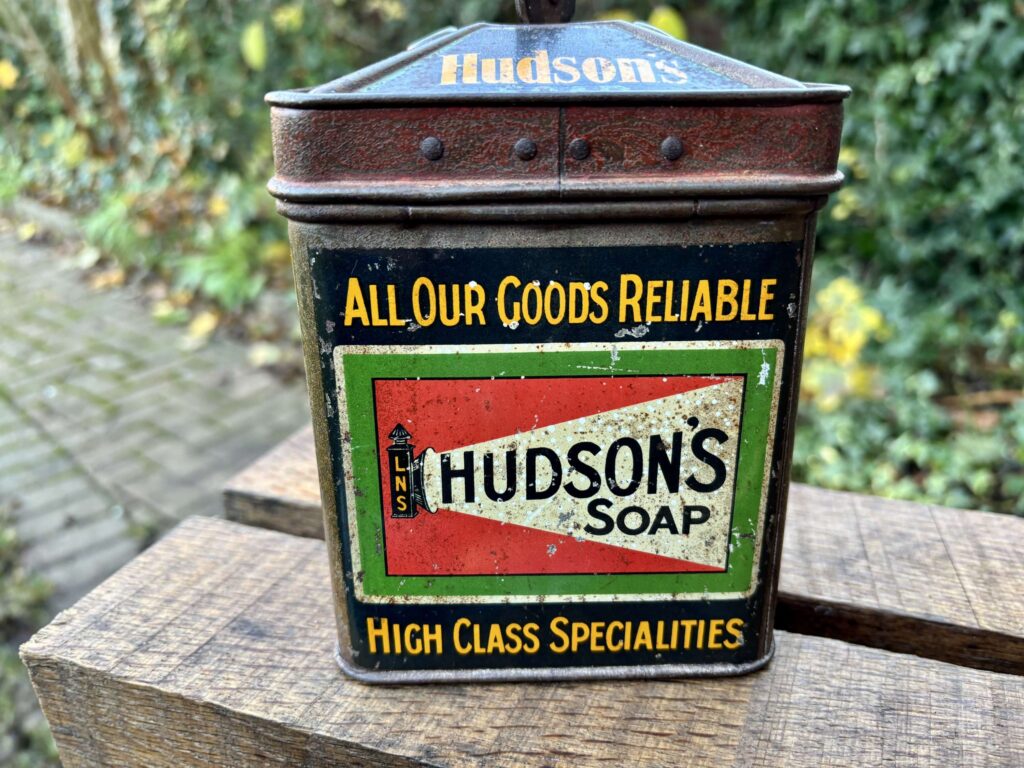
Hudson’s Soap tins, first distributed in England during the late nineteenth century, are known for their bright blue and red designs. The company marketed itself as offering the best washing. These tins once contained powdered soap for home use. Their cheerful slogans and decorative lettering make them visually appealing. They are often valued between $80 and $130.
Collectors are drawn to Hudson’s tins because of their old-fashioned charm and durability. Many have aged beautifully with patina that adds depth to their colors. Special commemorative tins occasionally appear at antique fairs. Restoring them lightly can reveal original shades and lettering. These pieces capture a nostalgic view of early domestic advertising.
Wrigley’s Chewing Gum Tin
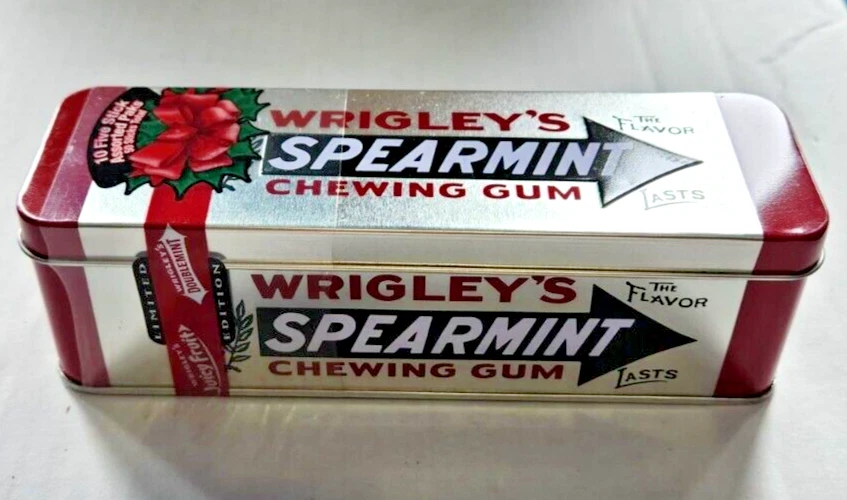
Wrigley’s, known for its Spearmint and Juicy Fruit gums, released colorful store display tins in the early 1900s. These tins held wrapped gum sticks and often featured the green arrow logo with art deco lettering. Because most were used in retail, few have survived in good condition. Collectors value them for their connection to early American consumer culture. Depending on size and condition, they can sell for $150 to $300.
The appeal of Wrigley’s tins lies in their bold branding and association with everyday life. Some have hinged lids and internal dividers, adding to their uniqueness. Versions used in pharmacies and soda shops tend to be rarer. Many collectors pair these tins with old advertising signs for display. Their timeless design continues to capture attention at vintage markets.
Campbell’s Soup Advertising Tin
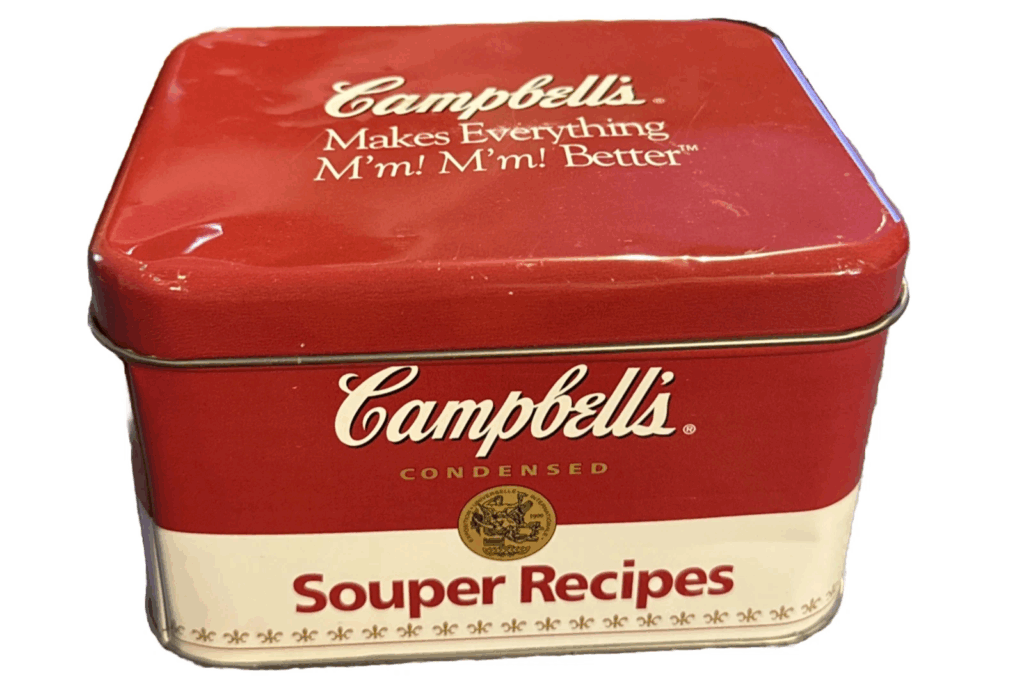
Campbell’s Soup Company produced promotional tins during the 1920s and 1930s featuring its classic red and white label design. Some were used to hold biscuits, sewing kits, or limited-edition gift items. The design became an American icon through its simplicity and familiarity. Early tins are now sought after for their connection to one of the most recognized food brands in history. Depending on rarity, values range from $180 to $350.
Collectors treasure these tins for their association with pop culture and advertising art. A few rare editions include special prints or factory logos that raise their value. The tin’s color combination remains instantly recognizable even after decades. Clean surfaces and intact lids are key factors in determining worth. Owning one feels like holding a small piece of advertising history.
These tins continue to grow in appeal as more collectors appreciate their beauty and cultural value. Start exploring today and see which classic designs could become the highlight of your collection.
This article originally appeared on Avocadu.
